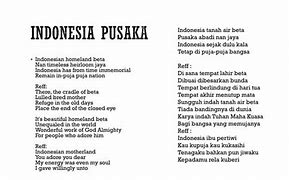
Belanja di App banyak untungnya:
Melde dich an, um fortzufahren.
Offenbar hast du diese Funktion zu schnell genutzt. Du wurdest vorübergehend von der Nutzung dieser Funktion blockiert.
privacy_tipThe developer has provided this information about how this app collects, shares, and handles your data
Belanja di App banyak untungnya:
Belanja di App banyak untungnya:
By Eko B. Supriyanto, Chairman of Infobank Media Group
OMAR Abdalla, a senior banker in the 1980s, once said, banks should not only follow the business, but banks should be able to create the business. Banks should not only follow the business, but also be able to create the business.
Bankers are enjoying more profits, not only playing in safe loans, but also enjoying profits from the “bones” of bad loans that have been written off – which have been given reserves exceeding normal limits – with many contrived reasons. For example, the classic one is said to be for transformation reasons. Or, wanting to call the past bad with a sense of “revenge”.
The size of profits can be adjusted, especially towards the end of the term. Thus, the school of bankers with the “celengan semar” stamp emerged. Many “broke” the semar piggy bank for impressive profits. In fact, in their early days as number one, all the swearing about credit, and of course many things, was delegated to the old management. Anyway, the past leader and his entire team were wrong.
The blame was translated into lower profits. The scorched earth practice of credit was practiced, lowering credit quality – and shrinking profits. Provisions were sometimes excessive.
Then, it’s left for a year, or two years. Now, when entering the third year, the excessive provisioning is broken down into fantastic profits. As if it were an achievement, even though the profit was made from the bones of the previous management.
In fact, because they want to get an extension of their tenure, employee costs that should be a bonus are also sucked into profit and in the end this “semar piggy bank” stamp banker is overwhelmed because the reserve piggy bank is getting thin.
Under normal conditions, the semar piggy banker will reduce the cost of funds by disposing of high-interest deposits, which is not wrong. A great banker, he can optimize treasury income because as a large bank, he is certainly a market leader, so that when credit expansion occurs, he is not overwhelmed looking for funds with high interest rates, which will certainly shake the market.
Such a model may be repeated again. The term will occur the law of karma. Currently, the scorched earth method has become a model. If you don’t believe it, try to see if there is a change in the board of directors of a state-owned bank. Surely his successor will do the same thing, because this pattern is “comfortable” and has proven results. One teacher, one knowledge.
Meanwhile, the capital adequacy ratio (CAR) position is still left large, exceeding best practice in all banks in the world. Like a lazy bank – the high CAR position exceeds the best practice in the world.
Times have changed. The business environment has also changed. On the other hand, strict regulations have tightly bound the banks. There is not an inch of opportunity to do anything wrong. Not like the days when the rules were still loose. However, there is something that has not or has not changed, always, and that is the way of creating profits. It hasn’t changed over the last 15 years, especially in state-owned banks.
These days, there are several things that bankers must do to complete their obligations to the authorities. These include the completion of recovery plans, resolution plans, protection of customer personal data, bank business plans (RBB), sustainable finance actions, and cybersecurity.
Meanwhile, the business environment has changed. Economic growth, which is five point, has not been able to improve the quality of job creation. Credit growth, as seen from the data, is no longer the engine of economic growth. Since 2015, our country’s economic growth has been driven more by the creation of state debt.
The evidence is that regardless of credit growth, whether double digit or single digit, economic growth is still in the five point range. This is different from the conditions before 2015. At that time, credit growth could drive economic growth because the rate of state debt was not so fast. It did not grow as quickly as it does now.
However, credit growth is still needed, despite the many binding rules and the changing business environment. The banks’ job is to provide credit to businesses that need it. However, credit expansion often follows existing credit. Rarely do banks provide credit to new projects.
According to data from the Financial Services Authority (OJK), as of August 2024, year on year (yoy) credit growth reached 11.40 percent and year to date (ytd) reached 5.89 percent. Obviously, this is good growth. However, in terms of liquidity, it seems a bit tight, as yoy fund growth only reached 7.01 percent and 2.27 percent on a ytd basis.
Despite the rapid credit growth, non-performing loans (NPLs) did not seem to change much. NPL (net) was maintained at 0.78 percent and 2.26 percent for gross NPL. It appears that credit quality is maintained. Even more encouraging, the loan at risk (LAR) position has declined to 10.17 percent from 12.55 percent at the end of 2023.
Creating large reserves is certainly not wrong. A high CAR is also not wrong. However, lately, large reserves are not merely to contain risks, but have become “semar piggy banks” that will be downloaded into profits to emphasize to the public that they are top-notch bankers.
Today, given the changing times and business environment, we need bankers like Omar Abdalla’s – who not only follow the business, but also initiate it intelligently. However, the precautionary principle must be implemented properly.
It is true that purchasing power is declining now. But bankers are in business with risk. If you are inherently afraid, of course you should not be called a reliable banker. The right nickname is banker safety player or the term banker stamp “celengan semar”. He is successful because he enjoys the credit “bones” of his predecessors. A great banker is a banker who is not only successful in making big profits, but is also able and willing to disburse credit that has an impact on improving the economy and ultimately people’s purchasing power.
Many say that bankers who prefer to make reversals from reserves are classified as “conservative bankers”. Or “celengan semar”, or “bankers who are aggressive in managing profits”.
They may be more focused on achieving short-term profits by reducing reserves, even though it may be risky if the quality of non-performing loans increases. This approach could create challenges in maintaining the bank’s financial health in the future.
Now, if credit quality deteriorates, there will be long-term impacts. For example, financial health will look a little less pretty, and the cost of capital will also increase. Banks may look profitable in the short term, but shrinking reserves will raise big question marks from investors. Moreover, the net interest margin (NIM) is starting to erode.
So, striking a balance between profit generation and risk management is key to the long-term sustainability and health of banks. Credit expansion is used to increase capacity and not to minimize the percentage of NPLs.
The Prabowo Subianto administration certainly has its own strategy in handling state-owned enterprises (SOEs), especially state-owned banks. It is almost certain that Team Prabowo will reshuffle the boards of directors of state-owned banks in 2025. The Prabowo administration certainly does not want the state-owned banks, which appear to be climbing in profits, to have a lot of write-offs and by breaking the semar piggy bank. Of course, we want to improve.
Banks are expected to not only boost the economy by providing quality credit, but also support job creation and at the same time be a pioneer in stimulating new investment for 8 percent economic growth. Bank credit must be returned to its original purpose, which is to encourage economic growth. Achieving profits is important. However, more important than that is how much credit is able to create jobs, which are currently low.
The era of “celengan semar” bankers is over. And, it started with the Prabowo Subianto administration. Moreover, even when Prabowo was not yet president, it was already difficult to get access to credit because they were deemed ineligible under the rules, even though they had adequate collateral.
Now Prabowo is president. Of course he has a way to solve the “comfort zone” of bankers. Find a banker who can bring his bank to what Omar Abdalla mentioned in the 1980s. That “banks should not only follow the business, but banks should be able to create the business.
It is time to end the era of bankers with the “celengan semar” stamp, who live off the bones of bad loans and are comfortable with too much CAR – which should be poured into the community / business actors in the form of credit. (*)























